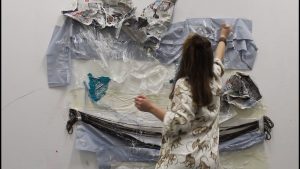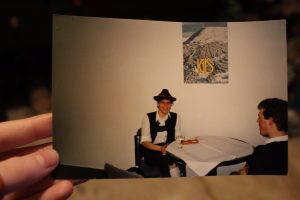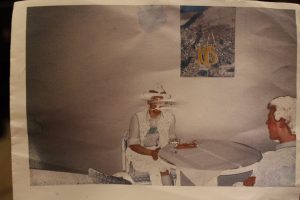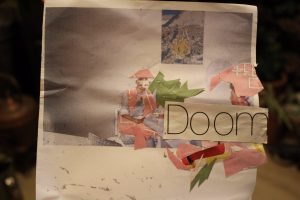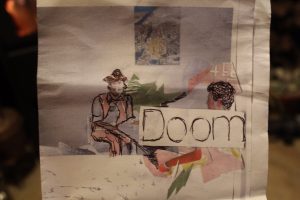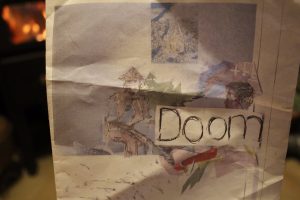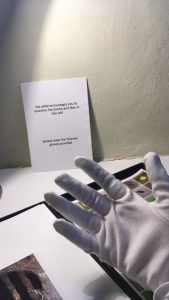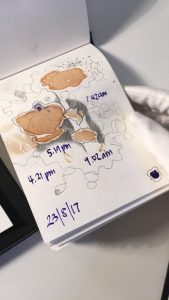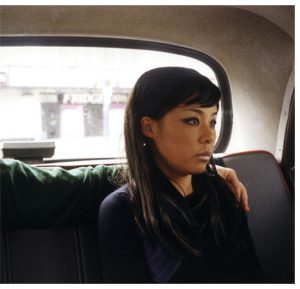For my video project, I recorded myself making simplistic but expressive movements, documenting the process of using obscure materials for the purpose of ‘painting’ in this performative way. While considering how I could make this work more elaborate, two things came to mind.
First of all, I could physically make my workspace bigger, so as to free up my movements. The surface of my piece may cover the wall space of a room so that I would have to work harder to reach up to certain areas in order to create marks: I will be able to be more unapologetic about my movements.
Second of all, I could make this work participatory. This would open up my project, in that you would be able to almost compare the personalities of the ‘performers’: some will be more confident with their movements compared to others, for example. This will unlock the potential of play, which could be an interesting attribute. I named my film ‘play’ for the purpose of suggesting this idea, and to watch others engage and have fun with the activity would suggest this further.
Finally, I could experiment with VR in order to capture everything that is happening at once. This would enhance the energetic vibe by allowing more than one thing to happen at once while still capturing it. The act of watching the video will become part of the performance: it would be far more immersive, allowing you to move around in order to take in the entire environment.

